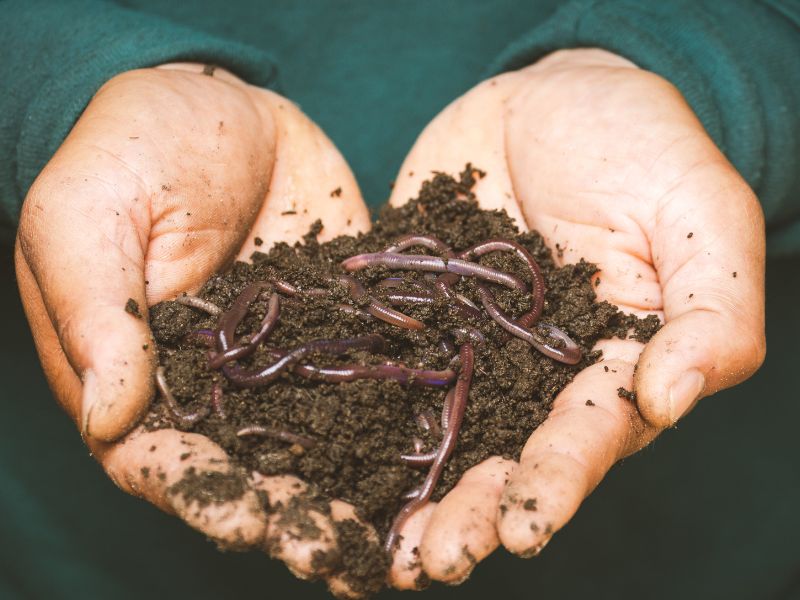Red Wiggler Composting: How to Beginning and Keep an Effective Worm Container
Red Wiggler Composting: How to Beginning and Keep an Effective Worm Container
Blog Article
Understanding the Benefits of Red Wiggler Composting: Just How This Efficient Approach Changes Organic Waste Into Nutrient-Rich Soil Modifications
Red Wiggler composting, using the species Eisenia fetida, presents an engaging strategy to organic waste monitoring, converting kitchen area scraps and backyard particles into useful soil amendments. This technique not just boosts dirt fertility yet also addresses pressing environmental worries, consisting of land fill waste decrease and greenhouse gas exhausts.
What Are Red Wigglers?
Red wigglers, medically called Eisenia fetida, are a species of earthworm that play a critical function in vermicomposting systems. These worms are defined by their reddish-brown shade, segmented bodies, and an unique capability to prosper in organic-rich atmospheres, making them excellent for composting applications - Red Wiggler Composting. Unlike their garden-dwelling equivalents, red wigglers favor to live in the top layers of dirt, where rotting matter is abundant
Generally gauging in between 3 to 4 inches in length, red wigglers have a high reproductive price, enabling them to increase rapidly under ideal conditions. They have an unique digestion system that allows them to refine organic waste successfully, converting it right into nutrient-rich spreadings, which are extremely beneficial for plant growth.
Their resistance to varying wetness levels and temperature varies even more boosts their energy in vermicomposting setups, making them a preferred choice among composting fanatics. Additionally, red wigglers are cardiovascular microorganisms, which necessitates a well-aerated composting atmosphere, making certain effective decay. Recognizing the organic traits and actions of red wigglers is important for enhancing their usage in lasting waste management methods.

Advantages of Vermicomposting
Using the power of vermicomposting deals a wide range of environmental and farming benefits. It substantially decreases organic waste in land fills, consequently reducing methane emissions, a powerful greenhouse gas. By diverting food scraps and yard waste to vermicomposting, we sustain a more lasting waste management system.
In addition, vermicomposting improves dirt health and wellness. The castings created by red wigglers are abundant in necessary nutrients, microbes, and enzymes, boosting soil framework and fertility. This nutrient-rich amendment promotes durable plant growth and raises water retention, minimizing the need for chemical fertilizers.
In addition, vermicomposting fosters biodiversity in the soil ecological community. The introduction of helpful microorganisms from worm spreadings help in disease reductions and nutrient biking, creating a healthier setting for plants.
Economically, vermicomposting decreases the prices connected with chemical inputs and waste disposal. Garden enthusiasts and farmers can cultivate premium fruit and vegetables at reduced expenses, contributing to food protection and sustainability.
How to Start Composting
Starting a composting endeavor can be a rewarding and straightforward procedure. To start, select a suitable place that is well-drained and gets partial sunshine. This will aid preserve a balanced temperature level, important for the composting procedure. Next off, choose a compost bin or create a marked area in your garden, ensuring it is quickly available for including products and gathering compost.
Gather organic materials such as cooking area scraps, backyard waste, and shredded paper. Goal for a balanced mix of 'eco-friendly' materials, high in nitrogen (e.g., fruit scraps, coffee premises), and 'brownish' materials, rich in carbon (e.g., dried out fallen leaves, cardboard) A ratio of roughly 2:1 environment-friendly to brownish materials is ideal.
Beginning layering your products, making sure sufficient air circulation by transforming the stack on a regular basis. This promotes aerobic disintegration, minimizing odors and speeding up up the process. Monitor dampness levels; the garden compost ought to seem like a moist sponge but not extremely wet.
Nutrient Account of Vermicompost
Composting, especially with red wigglers, yields a nutrient-rich item called vermicompost. This natural change is identified by its high concentration of important nutrients, making it an invaluable resource for horticulture and agriculture. Vermicompost commonly includes elevated levels of macronutrients such as potassium, phosphorus, and nitrogen, which are critical for plant development. Additionally, it supplies trace elements like iron, magnesium, and calcium, fostering robust plant growth and enhancing soil health and wellness.
The microbial activity existing in vermicompost additionally improves its account, introducing helpful germs and fungis that promote nutrition accessibility and uptake in plants. This biological component aids in suppressing plant illness and boosting dirt structure, resulting in improved water retention and aeration.

Environmental Influence of Composting
The ecological impact of composting, especially via the use of red wigglers, is check my source complex and profound. This method substantially lowers the volume of organic waste sent to garbage dumps, which subsequently lessens greenhouse gas emissions, especially methane-- a powerful factor to environment adjustment. By drawing away natural products from landfills, red wiggler composting not only helps reduce environmental deterioration however likewise advertises lasting waste administration methods.

Furthermore, composting adds to carbon sequestration, as the process catches carbon dioxide from the atmosphere and shops it in the dirt. check my source This natural process help in combating climate modification while improving the soil - Red Wiggler Composting. Generally, red wiggler composting presents a my website feasible, eco-friendly service for waste monitoring and environmental sustainability, promoting much healthier ecological communities and a more lasting future
Verdict
In verdict, Red Wiggler composting offers as a reliable approach for transforming organic waste into important soil amendments. The process not just boosts dirt fertility and structure but also mitigates ecological concerns connected with waste disposal.
Red Wiggler composting, utilizing the species Eisenia fetida, presents an engaging technique to organic waste management, converting cooking area scraps and backyard debris into beneficial dirt changes. Unlike their garden-dwelling equivalents, red wigglers favor to populate the upper layers of dirt, where rotting matter is abundant.
The spreadings created by red wigglers are rich in crucial nutrients, microorganisms, and enzymes, enhancing dirt framework and fertility. The nutrient-rich byproducts of red wiggler task enhance dirt structure, increase water retention, and advertise biodiversity within the soil ecosystem.In verdict, Red Wiggler composting serves as a reliable technique for converting natural waste right into useful soil modifications.
Report this page